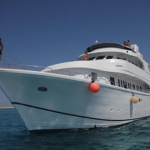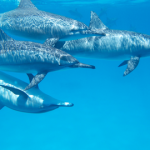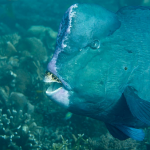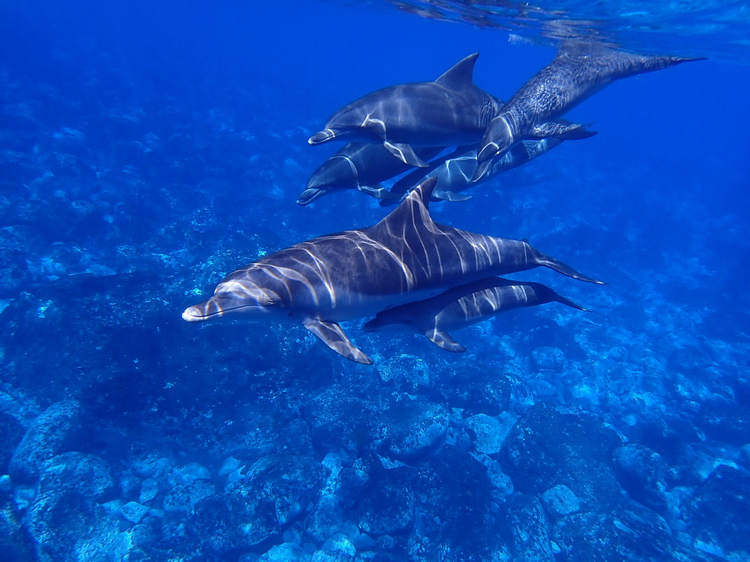
If you are considering a deep south Red Sea liveaboard safari, St. John’s Island (Jazirat Zabargad) is a place to dive.
If you like the idea of diving in warm crystal clear blue waters, with vibrant and colourful reefs that are full of sea life, then St. John’s should be top of your dive bucket list.
St. John’s Island (Jazirat Zabargad) dive site offers year-round diving and is considered one of the best dive sites in the Red Sea. Only available to dive from a liveaboard with the chance to see vibrant reefs, tunnels, occasional hammerheads, oceanic whitetips, dolphins, manta rays and turtles.
Top Tip: To make the most of your scuba diving trip to St. John’s and the southern Red Sea, you are recommended to be a PADI Advanced Diver or equivalent. You should also aim to have at least 50 completed dives under your belt too. This way you won’t miss out on some of the most exciting dives like the one on Rocky Island below where an oceanic whitetip sharks meets a tiger shark (see below).
The best way to dive the Red Sea, and especially the best and more remote locations in the Red Sea, is by a scuba diving liveaboard. You can check the latest and best deals on Red Sea liveaboards using the following window:
For an idea of what the diving is like at St. John’s Island, take a watch of this video taken from diving on the M/Y Aldebaran liveaboard.
Notice the oceanic whitetip shark enters the frame at about 3 minutes into the video.
If you would like to know which liveaboards visit the St. John’s Islands dive site, you can find this out from the very handy Red Sea liveaboard dive boat table on this post.
You should be able to find the perfect dive liveaboard to suit you and your budget, as the table provides most information for each liveaboard.
You can also search the best Red Sea Liveaboards below:
Table of liveaboard diving in the Red Sea
This list of Red Sea liveaboards is in descending customer rating order, followed by Scuba Diving Luxury Rating (SDE Lux Rating, see below), so the liveaboards with the highest customer rating and the best SDE lux rating will be at the top of the list. If you want to change the list order, use the “Sort by” dropdown below.
| Discover Liveaboard | Customer Rating | SDE Lux Rating % | Flexible Booking | Dive Courses | Dietary Requirements | Nitrox | Gear Rental | |
|---|---|---|---|---|---|---|---|---|
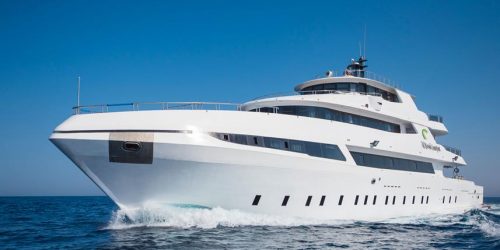 |
Review: MY Sea Serpent Grand; Book: MY Sea Serpent Grand | 9.1 | 65% | YES | YES | YES | YES | YES |
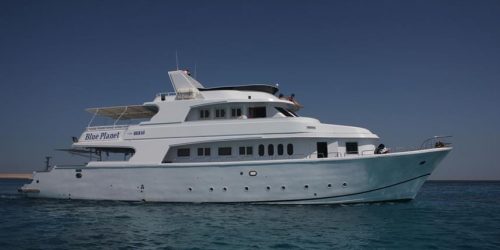 |
Review: MY Blue Planet 1; Book: MY Blue Planet 1 | 9.1 | 63% | NO | YES | YES | YES | YES |
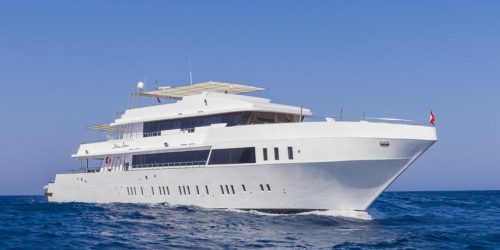 |
Review: MY Blue Seas; Book: MY Blue Seas | 9.1 | 62% | NO | YES | YES | YES | YES |
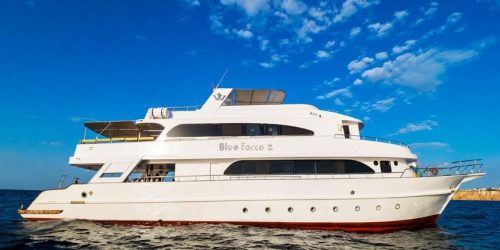 |
Review: MY Red Sea Blue Force 2; Book: MY Red Sea Blue Force 2 | 9.1 | 54% | YES | YES | YES | YES | YES |
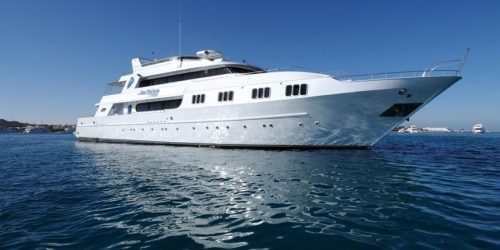 |
Review: MY Blue Horizon; Book: MY Blue Horizon | 9 | 73% | YES | YES | YES | YES | YES |
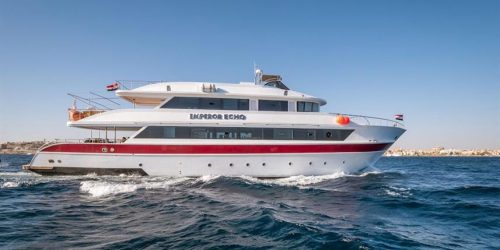 |
Review: MY Emperor Echo; Book: MY Emperor Echo | 9 | 69% | YES | YES | YES | YES | YES |
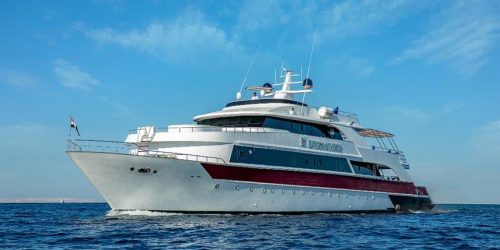 |
Review: MY Emperor Superior; Book: MY Emperor Superior | 9 | 67% | YES | YES | YES | YES | YES |
 |
Review: MV Sea Serpent Serena; Book: MV Sea Serpent Serena | 8.9 | 83% | YES | YES | YES | YES | YES |
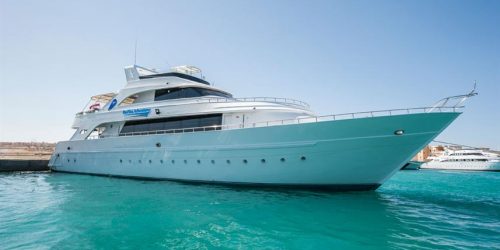 |
Review: MY Blue Adventurer; Book: MY Blue Adventurer | 8.9 | 69% | YES | YES | YES | YES | YES |
 |
Review: MY Tillis; Book: MY Tillis | 8.9 | 65% | YES | NO | YES | YES | YES |
The Scuba Diving Earth Luxury Rating (SDE Lux Rating) is explained on each liveaboard review when you click the “Discover Liveaboard” link, and is my own Liveaboard Luxury Rating I’ve assigned to all liveaboards. Choosing between liveaboards is helped by customer scores, and if you get stuck choosing between two or three liveaboards, where each one has a high customer score out of 10, you can use the SDE Luxury Rating to help narrow down your choice.
Think about it like using Booking.com when searching for the best hotel. Booking.com also use a customer score where each customer rates hotels out of 10. This is similar to the liveaboard customer rating, which is also rated out of 10. But let’s say you only like to stay in hotels rated 8 and above on Booking.com, but you also want the hotel to have WIFI or parking, or to have a swimming pool etc. The features each hotel has is usually secondary to the score out of 10.
Another option is for you to take a look to see “what divers are saying about the St. John’s diving” at the same time as reviewing the “most popular St. John’s liveaboards“.
There is a mixed bag of reviews, but here’s an example of a few of the better St. John’s Island reviews:
- “Topographically stunning. The pinnacles and the swim-throughs are the highlight in St. John.“.
- “Beautiful. Rich marine life and lots of vast and colourful coral gardens, plus surreal underwater landscapes“.
- “Excellent visibility, amazing life beneath the sea”.
- “I loved the cave system with wonderful corals“.
- “Amazing huge reef – beautiful caves“.
- “Very good dive sites, we enjoyed the deep dives, with several species of fish undisturbed by divers, probably due to less frequent diving in those areas. Amazing“.
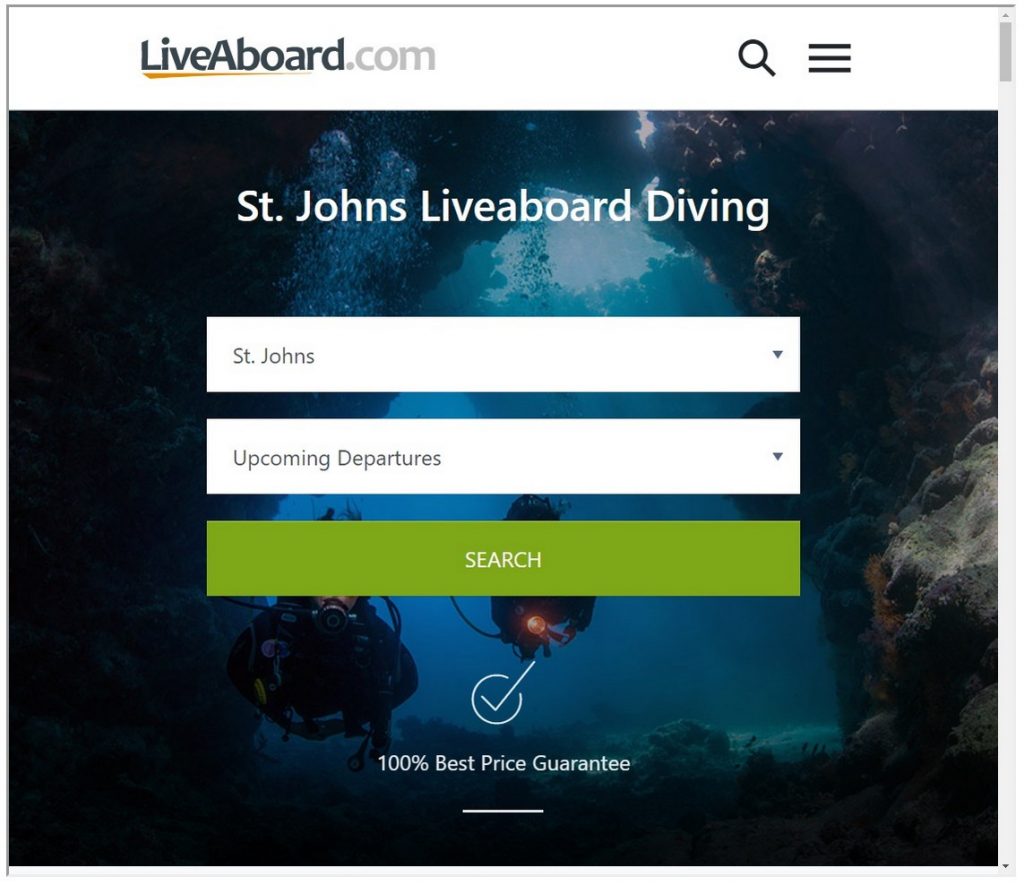
Where is St. John’s Island (Jazirat Zabargad)?
St. John’s Island (Known as Jazirat Zabargad) is:
- 220km (137.5m) south east of Marsa Alam.
- About 60km (37.5m) south east off the tip of the Ras Banas Peninsula in Egypt.
- 120km (75 miles) south east from Hamata.
- About 300km (188 miles) south east of Port Ghalib.
- 170km (106m) south east of Daedalus Reef dive site.
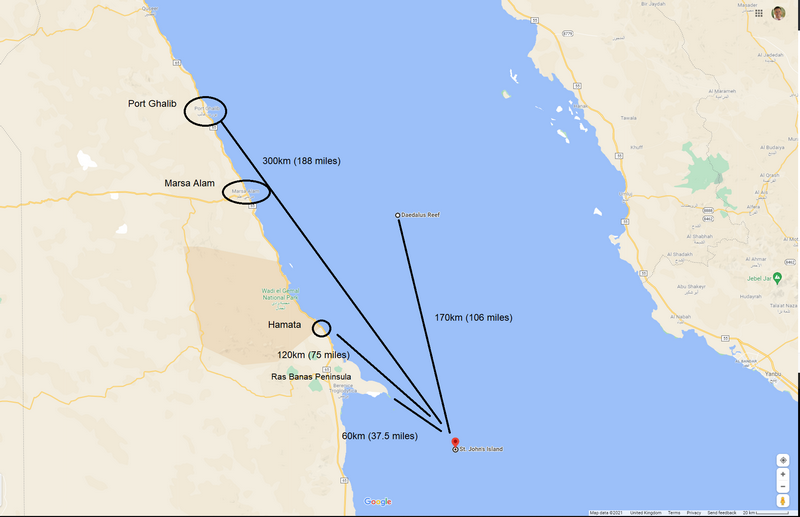
St. John’s Island (Jazirat Zabargad) map
From the St. John’s Island (Jazirat Zabargad) map you see how close the island is to Ras Banas peninsula and how far south it is from where deep south Red Sea liveaboard safaris set off from in Port Ghalib.
St. John’s Island is also 120km (75m) south east of Hamata, which is where some Red Sea liveaboards depart.
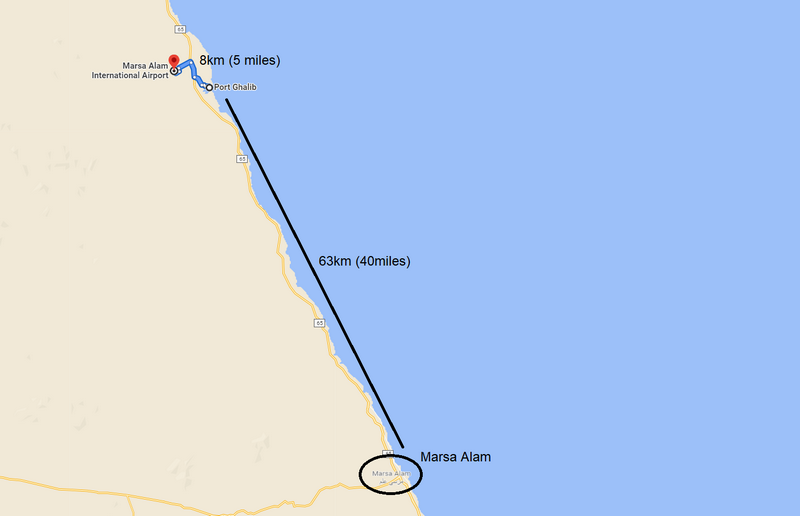
How to scuba dive St. John’s Island
The diving at St. John’s Island is by liveaboard safari only. Red Sea liveaboard boats for St. John’s Island depart from Hamata, Port Ghalib or Marsa Alam.
How you get to St. John’s Island from Port Ghalib is as follows:
- Port Ghalib has a small international airport (Marsa Alam International Airport), which is served by a few international airlines mainly from Europe.
- Internal flights fly to Marsa Alam International Airport from Hurghada too, where flights from Europe and the USA fly in to.
- Marsa Alam International Airport is 8km (5m) from Port Ghalib, which is a 15 minute transfer.
- St. John’s Island is then a 300km (188m) liveaboard trip south from Port Ghalib.
How you get to St. John’s Island from Marsa Alam is as follows
- Port Ghalib has a small international airport (Marsa Alam International Airport), which is served by a few international airlines mainly from Europe.
- Internal flights fly to Marsa Alam International Airport from Hurghada too, where flights from Europe and the USA fly in to.
- Marsa Alam International Airport is 70km (44m) from Marsa Alam, which is a 60 minute transfer.
- St. John’s Island is then a 220km (137.5m) liveaboard trip south from Marsa Alam.
St. John’s Island diving
The St’ John’s Islands dive site, which is known locally as Jazirat Zabargad, is one of the best dive sites for stunning topography and colourful and vibrant coral reefs. Still largely unspoilt as less divers visit the deep south of the Red Sea.
What to expect on the dives around St. John’s Island:
St. John’s Habili Ali reef dive site
- Habili Ali reef dive is a submerged shallow plateau.
- It is the eastern most of the St. John’s reefs.
- The reef often experiences strong currents, which results in healthy corals such as gorgonians and black corals.
- The currents also attracts larger fish like reef sharks, hammerheads, oceanic whitetips, eagle rays and manta rays.
- You can pick your depth on this dive as the reef starts at 10-13 metres (33-43 feet), and drops off to around 200 metres (656 feet) deep.
- If you are lucky, you may even have the chance to see a pod of dolphins too.
St. John’s Habili Gafaar reef dive site
- Habili Gafaar reef dive site is in the middle of St. John’s Islands reefs.
- Habili is recommended for experienced divers as it’s deep drop-off to around 100 metres (328 feet).
- There are often strong currents at Habili reef that hit the north face.
- If you don’t stay close to the reef, there is a chance to be swept out to the open sea.
- The walls are densely overgrown with corals and plunge from the flat reef at about 3 metres (10 feet) to a ledge at a depth of about 70 metres (230 feet).
- On the north wall there is a small ledge at around 40 metres (131 feet) which is a good place to watch for large fish like grey reef sharks and silvertips.
- Be careful of the strong surge as you do your safety stop, as there is often a strong surge that can push you onto the reef.
My diving-vlog-book from a fantastic week of diving in the Red Sea with a wonderful team of divers from Bergamo.
St. John’s Dangerous Reef dive site
- Dangerous reef is not dangerous at all and is ideal for beginner divers, as it’s at 20 metres (67 feet).
- On the northern tip is a coral garden which has coral towers.
- There and a few of caverns to explore at about 10 metres (33 feet) near the liveaboard mooring.
- Good chance to see moray eels, turtles, blue spotted rays and possible even a whale shark.
- Very minimal currents run along this reef from the north.
- A perfect dive site for a night dive.
This is a night dive on Dangerous Reef
Safari St. Johns
Rocky Island dive site
Rocky Island dive site is also visited on St. John’s liveaboards, which is about 5km south east of St. John’s or Zabargad.
- Rocky Island has a fringe reef.
- Rocky Island is hit by a southerly current that brings rich nutrients to the reef.
- The nutrients arriving in the currents provide food to the abundant corals and sea life.
- For those tech divers who love to dive deep wrecks on the south side of Rocky Island is the SS Maidan wreck at 80-110 metres (262-361 feet) (see video below).
- Currents can be unpredictable and are strongest on the east and west sides of the island.
- Chance to see grey reef sharks, hammerheads, schooling fish, oceanic whitetip sharks, dolphins and turtles.
- Not suitable for beginner or inexperienced divers due to depths and currents.
- Wall dive as the seabed is around 100 metres (328 feet).
To wet your appetite for the diving at Rocky Island, here’s a video of when an oceanic whitetip reef shark meets a tiger shark. This dive was from the M/V Nouran liveaboard.
My personal footage (full version) of a Longimanus that meets a tiger shark at Rocky Island, Egypt 17/10-2015. I believe it is a very rare occurrence seeing these two species of sharks together – so yes; I am very happy with my video footage 🙂
Diving the SS Maidan wreck red sea
The following video is of tech divers diving the SS Maidan from the MV Tala liveaboard, which has underwater scooters.
- The SS Maidan is at a depth of 80-110 metres (262-361 feet).
- Deep technical divers only.
- The SS Maidan was a “Steel Screw” Steam Cargo Ship of 8,205 GRT and 150 metres (492 feet) in length.
- Visited by very few divers due to its remote location and depth.
- Sank on 9th June 1923 due to a navigational error when she hit the south side of Rocky Island.
- Structure is largely intact and makes an exceptional technical dive.
The benefit of diving at depth with an underwater scooter is you swim less and use less air on your dive. Also, with scooters you exert yourself less at depth, which is better for decompression.
Back to the SS Maidan. A great dive with great visibility. A max depth of 110 meters. Penetration into the engine room. This wreck has a lot more diving to offer. Join us for the next trip to this magnificent ship wreck!
St. John’s caves dive site
- The caves are actually coral encrusted swim throughs with chimneys with beautifully lit caverns.
- Plenty of hard and soft corrals with many kinds of reef fish.
- You’ll find moray eels and large shoals of cardinal fish.
- Average dive depth of no more than 20 metres (67 feet).
- You many also get to meet the resident friendly Napoleon Wrasse.
Many St. John’s liveaboards also visit Fury Shoals too.
Fury Shoals dive sites
Dolphin Reef or Shaab Sataya dive site
- An excellent reef for diving and snorkelling with spinner dolphins.
- Occasionally bottlenose dolphins are also seen.
- Very common to snorkel or dive with pods of 20-30 inquisitive dolphins.
- About 12 km (7.5 miles) from the Hamata coastline.
- Shallow horseshoe shaped reef suitable for all diver experiences.
- Best dived from liveaboard, but dayboats also visit Dolphin Reef dive site from Marsa Alam or Hamata.
I hope you enjoyed this page about St. John’s Island (Jazirat Zabargad) Diving Egypt (Red Sea)
If you have more questions either about snorkelling or scuba diving (or specifically about St. John’s Island (Jazirat Zabargad) Diving Egypt (Red Sea)), please comment below with your questions.
Please share your experiences, plus dive sites, resorts and liveaboards you recommend. Share the time of year of your trip together with what you saw, the visibility, currents and dive operator, as this will help others who read this page.
There will also be many more pages and articles about scuba and scuba diving safety tips (and on snorkelling too) for you to read and learn about this fabulous sport.
Have fun and be safe!

